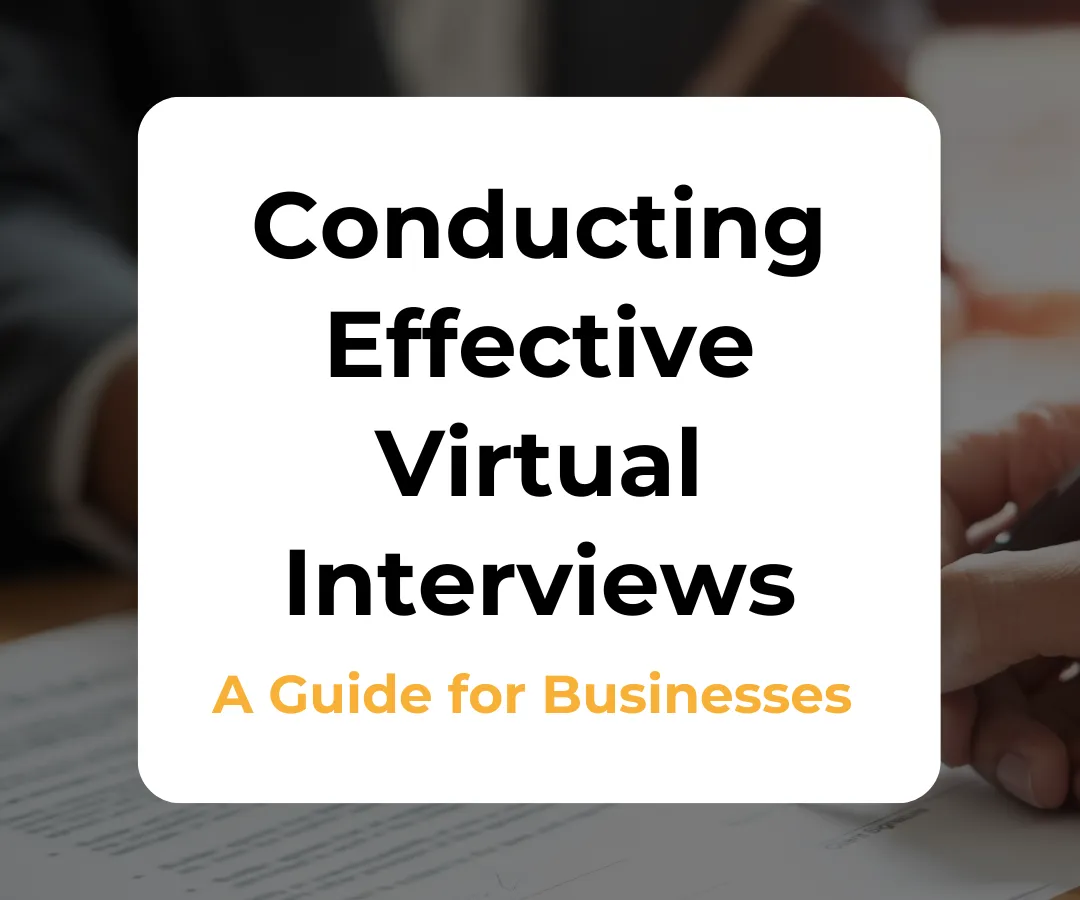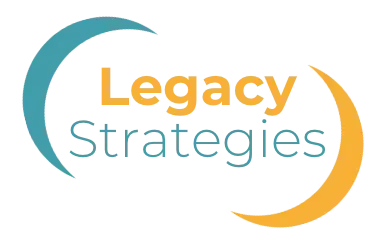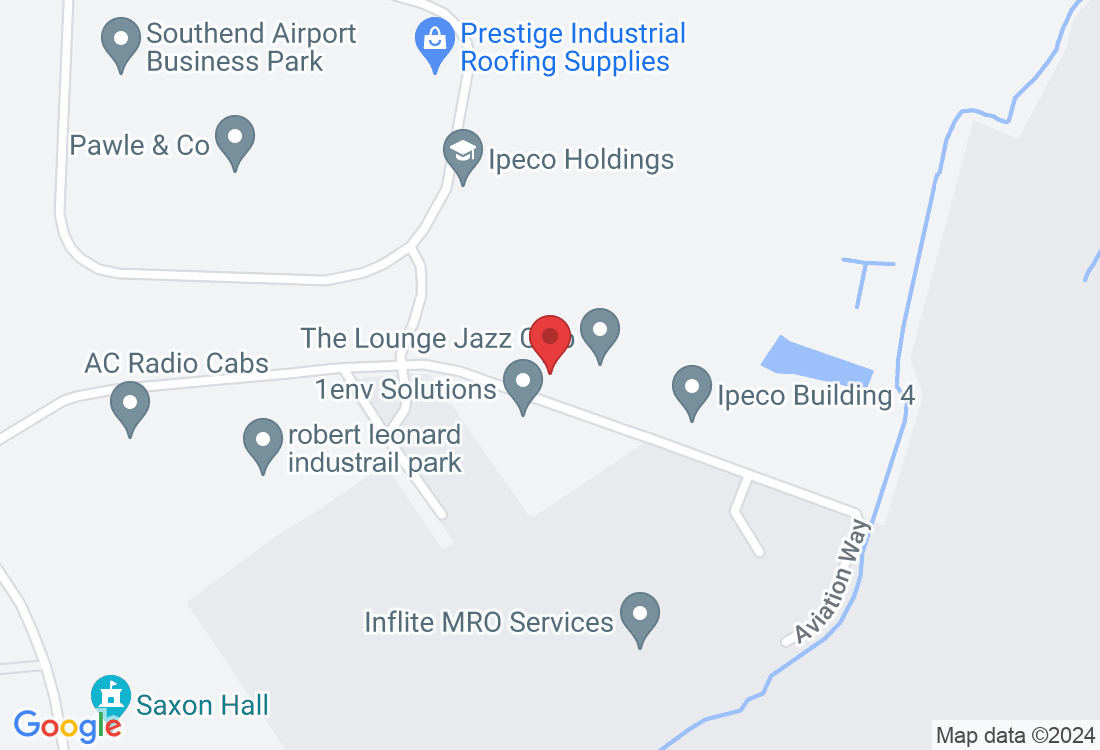Mon - Fri: 9:00 - 17:30
Legacy Strategies
Blogs & Articles
Stay up to date with the latest news
in Recruitment and Human Resources
Legacy Strategies
Blogs & Articles
Stay up to date with the latest news in Recruitment and Human Resources
At Legacy Strategies, we understand that the people behind any organisation are its most valuable asset. That's why we're excited to share our insights, expertise, and industry knowledge with you through our blogs.
In this space, you can find a wealth of information on the latest trends, best practices and innovative strategies that shape the Recruitment and HR landscape. Whether you're a HR professional, a hiring manager, a job seeker, or just someone interested in the ever-evolving world of talent acquisition and management, our blog is your go-to resource.
Stay tuned for regular updates as we explore the cutting-edge developments in HR technology, diversity and inclusion, talent acquisition strategies, and much more. We're here to empower you with knowledge that can drive your organisation's success!
At Legacy Strategies, we understand that the people behind any organisation are its most valuable asset. That's why we're excited to share our insights, expertise, and industry knowledge with you through our blogs.
In this space, you can find a wealth of information on the latest trends, best practices and innovative strategies that shape the Recruitment and HR landscape. Whether you're a HR professional, a hiring manager, a job seeker, or just someone interested in the ever-evolving world of talent acquisition and management, our blog is your go-to resource.
Stay tuned for regular updates as we explore the cutting-edge developments in HR technology, diversity and inclusion, talent acquisition strategies, and much more. We're here to empower you with knowledge that can drive your organisation's success!

Conducting Effective Virtual Interviews
⭐How to Conduct a Successful Virtual Interview🏗️

How to Conduct Effective Virtual Interviews
The landscape of recruitment has evolved dramatically, especially with the rise of remote work. Virtual interviews have become a standard part of the hiring process, allowing companies to connect with candidates from around the world. While convenient, virtual interviews present unique challenges that require thoughtful preparation and execution. Here’s a comprehensive guide to conducting effective virtual interviews.
1. Preparation is Key
Set Clear Objectives: Define what you want to achieve with the interview. Outline the skills, experience, and qualities you’re looking for in a candidate.
Familiarise with Technology: Ensure you and your team are comfortable with the virtual meeting platform you’ll be using. Test your internet connection, camera, microphone, and any other tools beforehand to avoid technical issues.
Prepare Questions in Advance: Develop a structured list of questions that cover technical skills, cultural fit, and behavioral aspects. This helps maintain consistency across interviews and ensures you gather all necessary information.
Provide Instructions to Candidates: Send clear instructions to candidates on how to join the interview, including any software they need to install or accounts they need to create. Include tips for a smooth virtual interview experience.
2. Creating a Comfortable Environment
Choose a Quiet, Professional Setting: Conduct the interview in a quiet space where you won’t be interrupted. Ensure your background is professional and free from distractions.
Test Your Setup: Log in a few minutes early to check your audio, video, and internet connection. Make sure your lighting is good, and your camera is at eye level to maintain proper eye contact.
Make the Candidate Comfortable: Start the interview with a warm welcome and casual conversation to ease the candidate’s nerves. Explain the interview process and what they can expect.
3. Conducting the Interview
Be Present and Engaged: Maintain eye contact by looking at the camera, and nod or smile to show you’re engaged. Avoid multitasking or looking at your phone during the interview.
Use Behavioral Questions: Ask open-ended questions that prompt candidates to discuss their past experiences. For example, “Can you tell me about a time when you had to overcome a significant challenge at work?”
Assess Technical Skills: If applicable, incorporate technical assessments or practical tasks that candidates can perform during the interview. Share your screen or use collaborative tools to facilitate this process.
Evaluate Cultural Fit: Discuss your company’s values, culture, and expectations. Ask candidates how they align with these and provide examples of how they’ve demonstrated similar values in their previous roles.
4. After the Interview
Provide Next Steps: At the end of the interview, explain the next steps in the hiring process. Let the candidate know when they can expect to hear back from you.
Gather Feedback: If multiple team members participated in the interview, meet shortly after to discuss your impressions and consolidate feedback.
Follow Up Promptly: Send a thank-you email to the candidate, acknowledging their time and effort. Provide any additional information they might need and reiterate the next steps.
5. Continuous Improvement
Solicit Feedback: Ask candidates for feedback on their interview experience. Use this information to improve your virtual interview process.
Stay Updated with Technology: Keep abreast of new tools and technologies that can enhance the virtual interview experience. Consider investing in software that offers better functionality and user experience.
Training and Development: Provide training for your hiring team on conducting virtual interviews. Share best practices and encourage continuous learning.
Conclusion
Virtual interviews are an essential part of modern recruitment, offering flexibility and accessibility. By preparing thoroughly, creating a comfortable environment, conducting structured interviews, and continuously seeking improvement, you can ensure a positive and effective virtual interview experience for both your team and candidates. Embrace the technology and techniques that make virtual interviews successful, and you’ll be well on your way to hiring top talent from around the globe.
Want to learn more about the Hiring process? Contact Us!
📞 01702 540145
Useful sources and information

Conducting Effective Virtual Interviews
⭐How to Conduct a Successful Virtual Interview🏗️

How to Conduct Effective Virtual Interviews
The landscape of recruitment has evolved dramatically, especially with the rise of remote work. Virtual interviews have become a standard part of the hiring process, allowing companies to connect with candidates from around the world. While convenient, virtual interviews present unique challenges that require thoughtful preparation and execution. Here’s a comprehensive guide to conducting effective virtual interviews.
1. Preparation is Key
Set Clear Objectives: Define what you want to achieve with the interview. Outline the skills, experience, and qualities you’re looking for in a candidate.
Familiarise with Technology: Ensure you and your team are comfortable with the virtual meeting platform you’ll be using. Test your internet connection, camera, microphone, and any other tools beforehand to avoid technical issues.
Prepare Questions in Advance: Develop a structured list of questions that cover technical skills, cultural fit, and behavioral aspects. This helps maintain consistency across interviews and ensures you gather all necessary information.
Provide Instructions to Candidates: Send clear instructions to candidates on how to join the interview, including any software they need to install or accounts they need to create. Include tips for a smooth virtual interview experience.
2. Creating a Comfortable Environment
Choose a Quiet, Professional Setting: Conduct the interview in a quiet space where you won’t be interrupted. Ensure your background is professional and free from distractions.
Test Your Setup: Log in a few minutes early to check your audio, video, and internet connection. Make sure your lighting is good, and your camera is at eye level to maintain proper eye contact.
Make the Candidate Comfortable: Start the interview with a warm welcome and casual conversation to ease the candidate’s nerves. Explain the interview process and what they can expect.
3. Conducting the Interview
Be Present and Engaged: Maintain eye contact by looking at the camera, and nod or smile to show you’re engaged. Avoid multitasking or looking at your phone during the interview.
Use Behavioral Questions: Ask open-ended questions that prompt candidates to discuss their past experiences. For example, “Can you tell me about a time when you had to overcome a significant challenge at work?”
Assess Technical Skills: If applicable, incorporate technical assessments or practical tasks that candidates can perform during the interview. Share your screen or use collaborative tools to facilitate this process.
Evaluate Cultural Fit: Discuss your company’s values, culture, and expectations. Ask candidates how they align with these and provide examples of how they’ve demonstrated similar values in their previous roles.
4. After the Interview
Provide Next Steps: At the end of the interview, explain the next steps in the hiring process. Let the candidate know when they can expect to hear back from you.
Gather Feedback: If multiple team members participated in the interview, meet shortly after to discuss your impressions and consolidate feedback.
Follow Up Promptly: Send a thank-you email to the candidate, acknowledging their time and effort. Provide any additional information they might need and reiterate the next steps.
5. Continuous Improvement
Solicit Feedback: Ask candidates for feedback on their interview experience. Use this information to improve your virtual interview process.
Stay Updated with Technology: Keep abreast of new tools and technologies that can enhance the virtual interview experience. Consider investing in software that offers better functionality and user experience.
Training and Development: Provide training for your hiring team on conducting virtual interviews. Share best practices and encourage continuous learning.
Conclusion
Virtual interviews are an essential part of modern recruitment, offering flexibility and accessibility. By preparing thoroughly, creating a comfortable environment, conducting structured interviews, and continuously seeking improvement, you can ensure a positive and effective virtual interview experience for both your team and candidates. Embrace the technology and techniques that make virtual interviews successful, and you’ll be well on your way to hiring top talent from around the globe.
Want to learn more about the Hiring process? Contact Us!
📞 01702 540145
Useful sources and information

Conducting Effective Virtual Interviews
⭐How to Conduct a Successful Virtual Interview🏗️

How to Conduct Effective Virtual Interviews
The landscape of recruitment has evolved dramatically, especially with the rise of remote work. Virtual interviews have become a standard part of the hiring process, allowing companies to connect with candidates from around the world. While convenient, virtual interviews present unique challenges that require thoughtful preparation and execution. Here’s a comprehensive guide to conducting effective virtual interviews.
1. Preparation is Key
Set Clear Objectives: Define what you want to achieve with the interview. Outline the skills, experience, and qualities you’re looking for in a candidate.
Familiarise with Technology: Ensure you and your team are comfortable with the virtual meeting platform you’ll be using. Test your internet connection, camera, microphone, and any other tools beforehand to avoid technical issues.
Prepare Questions in Advance: Develop a structured list of questions that cover technical skills, cultural fit, and behavioral aspects. This helps maintain consistency across interviews and ensures you gather all necessary information.
Provide Instructions to Candidates: Send clear instructions to candidates on how to join the interview, including any software they need to install or accounts they need to create. Include tips for a smooth virtual interview experience.
2. Creating a Comfortable Environment
Choose a Quiet, Professional Setting: Conduct the interview in a quiet space where you won’t be interrupted. Ensure your background is professional and free from distractions.
Test Your Setup: Log in a few minutes early to check your audio, video, and internet connection. Make sure your lighting is good, and your camera is at eye level to maintain proper eye contact.
Make the Candidate Comfortable: Start the interview with a warm welcome and casual conversation to ease the candidate’s nerves. Explain the interview process and what they can expect.
3. Conducting the Interview
Be Present and Engaged: Maintain eye contact by looking at the camera, and nod or smile to show you’re engaged. Avoid multitasking or looking at your phone during the interview.
Use Behavioral Questions: Ask open-ended questions that prompt candidates to discuss their past experiences. For example, “Can you tell me about a time when you had to overcome a significant challenge at work?”
Assess Technical Skills: If applicable, incorporate technical assessments or practical tasks that candidates can perform during the interview. Share your screen or use collaborative tools to facilitate this process.
Evaluate Cultural Fit: Discuss your company’s values, culture, and expectations. Ask candidates how they align with these and provide examples of how they’ve demonstrated similar values in their previous roles.
4. After the Interview
Provide Next Steps: At the end of the interview, explain the next steps in the hiring process. Let the candidate know when they can expect to hear back from you.
Gather Feedback: If multiple team members participated in the interview, meet shortly after to discuss your impressions and consolidate feedback.
Follow Up Promptly: Send a thank-you email to the candidate, acknowledging their time and effort. Provide any additional information they might need and reiterate the next steps.
5. Continuous Improvement
Solicit Feedback: Ask candidates for feedback on their interview experience. Use this information to improve your virtual interview process.
Stay Updated with Technology: Keep abreast of new tools and technologies that can enhance the virtual interview experience. Consider investing in software that offers better functionality and user experience.
Training and Development: Provide training for your hiring team on conducting virtual interviews. Share best practices and encourage continuous learning.
Conclusion
Virtual interviews are an essential part of modern recruitment, offering flexibility and accessibility. By preparing thoroughly, creating a comfortable environment, conducting structured interviews, and continuously seeking improvement, you can ensure a positive and effective virtual interview experience for both your team and candidates. Embrace the technology and techniques that make virtual interviews successful, and you’ll be well on your way to hiring top talent from around the globe.
Want to learn more about the Hiring process? Contact Us!
📞 01702 540145
Useful sources and information
01702 540145
Legacy Strategies Ltd,
Suite 3, 19 Aviation Way,
Southend-on-Sea,
Essex,
SS2 6UN
Mon - Fri: 9:00 - 17:30


